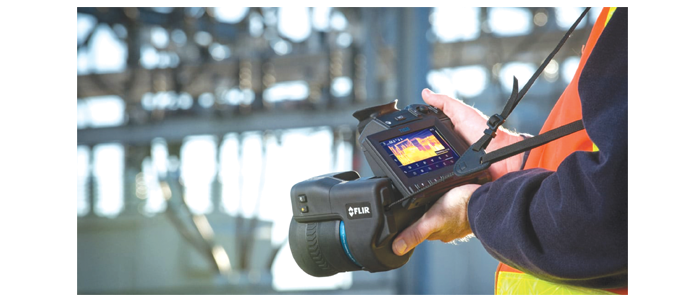- +61 7 3374 2877
- Email Us
Electric power utilities often face challenges with aging infrastructure. As the risk of equipment failure increases, so does the potential for unplanned maintenance costs. To mitigate these risks, thermal imaging cameras are a valuable tool as part of a preventive maintenance program. They can detect failures before they occur, helping utilities keep costs under control.
When a critical substation experiences a failure, such as an overheated transformer, it can have devastating consequences for the power utility. One failure can lead to widespread outages affecting thousands of customers, resulting in high repair or replacement costs.
Utilities are continuously seeking ways to improve the reliability of power delivery while reducing costs. By implementing regular temperature monitoring using advanced diagnostic thermal imaging cameras, power utilities can easily inspect and monitor the temperature distribution on the external surface of each substation component. This proactive approach allows them to identify and address failures before they cause disruptions. Thermal imaging cameras can detect impending equipment failures and security breaches at any time, day or night, from a remote monitoring location.

Thermal imaging cameras have been part of preventive maintenance programs at utility companies for many years. Especially in high-voltage applications, thermal imaging cameras have been indispensable in detecting imminent failures.
Thermal imaging cameras have been an integral part of preventive maintenance programs for utility companies for many years, particularly in high-voltage applications. Heat plays a crucial role in high-voltage installations, as electrical current passing through a resistive element generates heat. Increased resistance leads to higher heat generation. Over time, electrical connections may experience increased resistance due to loosening and corrosion. This rise in temperature can result in component failures, leading to unplanned outages and even safety hazards.
Furthermore, the energy dissipated as heat causes unnecessary energy losses. If left unaddressed, excessive heat can cause connections to melt and break down, potentially causing fires.
Examples of failures in high-voltage installations that can be detected with thermal imaging include:
Typical substation components which thermal signatures are precursors to failure include:
Identifying these and other issues at an early stage is crucial. Thermal imaging cameras assist maintenance operators in accurately locating the problem, determining its severity, and establishing an appropriate repair timeframe.